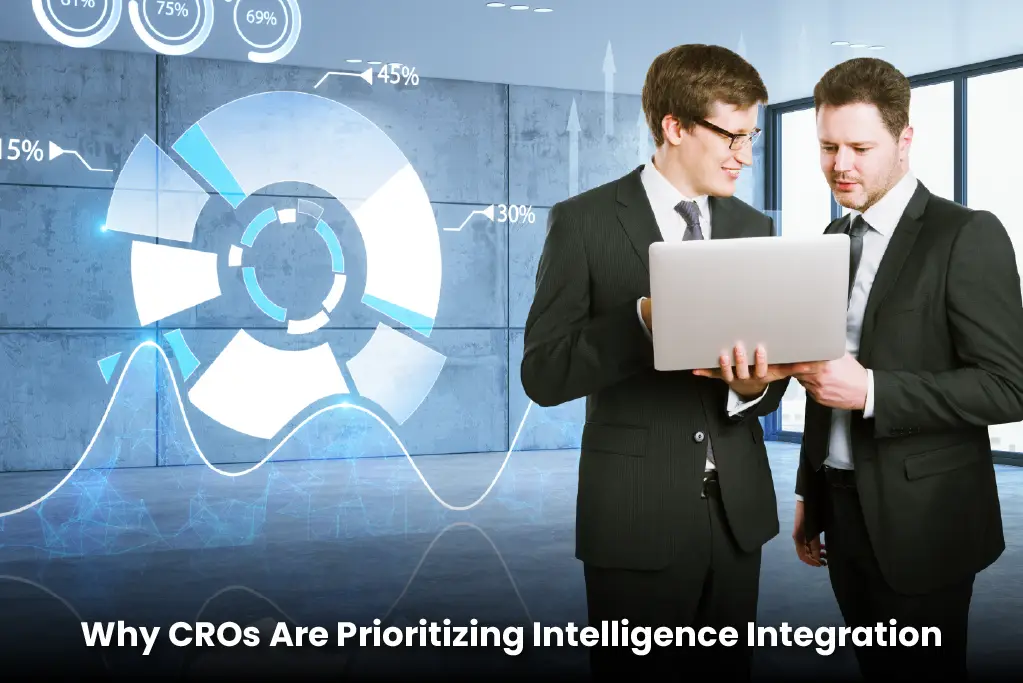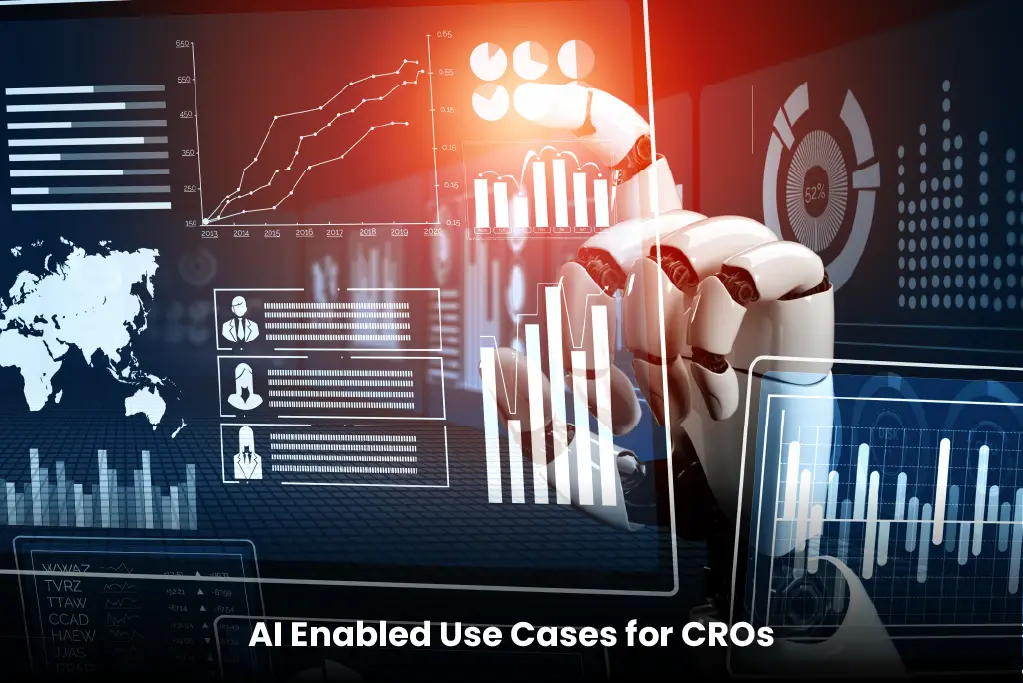Chief Revenue Officers (CROs) are being asked to bring sales, marketing and customer success under one revenue operations (RevOps) umbrella. This is not just a structural change, it’s a strategic move to eliminate silos, align metrics and optimize the customer journey from acquisition to retention.
Market competition, complex buying cycles and the rise of subscription based business models have made real-time cross-functional intelligence more critical. Managed intelligence integration delivers this by merging data, analytics and AI into one operational system. This allows CROs to drive predictable revenue growth and have every function operating from the same source of truth.
What is Managed Intelligence Integration?
Managed intelligence integration is the systematic unification of data streams, analytics platforms and AI driven insights across revenue generating departments. It means sales, marketing and customer success operate on the same metrics and intelligence.
Key attributes of this integration:
Centralized Data Infrastructure:
A single repository for sales performance data, marketing attribution and customer lifecycle metrics.
Cross Functional Analytics:
Shared dashboards and KPIs that measure the collective contribution of each department to revenue outcomes.
AI Augmented Decision Making:
Predictive models and recommendation engines that optimize campaign targeting, sales outreach and retention strategies.
In June 2025, KPMG introduced its multi-agent AI platform, KPMG Workbench, to unify client-service workflows across advisory, tax, and smart audit functions, aligning with the managed intelligence integration mandate that enables seamless AI-driven insight across traditionally siloed teams.
Why CROs Are Prioritizing Intelligence Integration

CROs know that disconnected systems and inconsistent data undermines revenue predictability. Marketing teams may report high campaign engagement but sales teams struggle to convert leads because of mismatched targeting. Customer success teams may not have early warning indicators of churn because the data resides in separate systems.
Managed intelligence integration solves this by:
- Data Consistency:
Every department uses the same validated data, no more reporting discrepancies.
- Aligned Performance Metrics:
Goals and KPIs are synced, so departmental success translates directly into revenue impact.
- End to End Visibility:
CROs have a complete view of the customer journey so they can allocate resources more precisely and plan more strategically.
Strategic Benefits for Enterprise RevOps
1. Revenue Predictability
Integrated intelligence platforms can forecast more accurately by incorporating variables from all revenue functions. Predictive analytics can predict conversion rates, upsell potential and churn risk more precisely.
2. Optimized Resource Allocation
When CROs have intelligence they can direct marketing spend, sales efforts, and customer support resources to the most impactful areas.
3. Faster Decision Cycles
Real time analytics reduces the time between data collection and action. CROs can pivot strategies based on immediate performance feedback rather than waiting for reports.
CRO’s Playbook
Unified Data Architecture
At the heart of managed intelligence, integration is a centralized data infrastructure. This platform ingests and regularizes data from CRM systems, marketing automation platforms, customer support tools and financial systems.
AI Driven Analytics Engine
AI models analyze patterns across the integrated data to generate predictive insights. These insights inform lead scoring, account prioritization, churn prevention and campaign optimization.
Cross-Functional Governance Framework
Governance ensures data integrity, access controls and compliance standards are met. This framework defines who can access which datasets, how KPIs are measured and how reporting is standardized across departments.
Industry Adoption Patterns
Technology Sector
High growth SaaS companies are implementing RevOps platforms to coordinate subscription renewals, upsell campaigns and targeted customer success interventions.
Manufacturing
Global manufacturers are aligning marketing campaigns with sales territories and post-sales service data, using AI driven intelligence to identify cross-sell opportunities.
Financial Services
Banks and insurance firms are deploying unified revenue intelligence systems to synchronize lead generation with relationship management and retention programs.
The CRO’s Role in Driving Integration Success
The CRO’s leadership is key to managed intelligence integration success. This role requires the authority to enforce cross-functional data sharing, the vision to align departmental objectives and the discipline to maintain governance standards. CROs must champion integration as both a technical and cultural transformation, get buy-in from all stakeholders.
Implementation Strategies for Managed Intelligence Integration
Establish a Single Source of Truth
First step is to consolidate all revenue related data into a centralized platform. This involves cleaning, normalizing, and merging data from sales, marketing, and customer success systems. A single source of truth cuts out duplication. It boosts reporting accuracy and builds trust in performance metrics.
Define Cross-Functional KPIs
Departments must agree on metrics that reflect their collective impact on revenue. For example, marketing’s lead quality should be measured not just by engagement but also by the conversion rates seen in sales. Customer success should be measured by retention rates and expansion revenue.
Deploy AI and Machine Learning Models
AI tools should be embedded into the intelligence platform to deliver predictive scoring, personalized engagement recommendations and churn alerts. This allows teams to priorities high value opportunities and take proactive action on retention risks.
Build a Governance and Compliance Framework
Data privacy regulations require careful management of customer information. Governance protocols should include role based access, audit trails and compliance with laws such as GDPR and CCPA. This protects customer trust and regulatory adherence.
AI Enabled Use Cases for CROs

Predictive Lead Scoring
AI models can score leads based on historical win rates, engagement patterns and demographic attributes. This allows sales teams to focus on prospects most likely to convert.
Real-Time Marketing Optimization
Intelligence allows marketing teams to adjust campaigns in real-time based on sales feedback and customer behavior.
Customer Churn Prevention
By analyzing support tickets, usage patterns and NPS scores AI can flag accounts at risk of churn, customer success teams can intervene early.
Cross-Sell and Upsell Targeting
Data integration shows patterns in customer buying behavior, CROs can identify the most receptive accounts for cross-sell or upsell offers.
In June 2025, Thomson Reuters unveiled its new agentic AI system, CoCounsel for Tax, Audit, and Accounting Professionals, designed to operate within real workflows, plan and execute multi-step tasks, and seamlessly integrate into professional-grade tools for AI-powered, cross-functional intelligence.
Challenges in Adoption
Data Silos and Legacy Systems
Integrating data from multiple legacy systems is the biggest hurdle. CROs need to invest in integration middleware and modern APIs to get over this.
Cultural Resistance
Departments used to independent reporting structures will resist unified KPIs and shared accountability. Clear communication and executive sponsorship is key to overcoming internal resistance.
AI Bias and Data Quality Risks
Poor data quality or biased training sets can lead to bad predictions. CROs need to have continuous monitoring and validation processes in place to keep the model intact.
Market Outlook for RevOps Intelligence Platforms
The market for integrated RevOps intelligence platforms is going to grow big, as enterprises want measurable ROI on revenue tech investments. Vendors are starting to offer AI-native solutions with embedded analytics, customizable dashboards and seamless CRM integration.
AI-driven integration will be a differentiator for CROs who want to win through data precision and decision speed. Within 3-5 years, managed intelligence integration will be a table stakes for enterprise RevOps strategies.
Strategic Recommendations for CROs
- Prioritize High-Impact Use Cases:
Start with revenue-critical applications like lead scoring and churn prevention.
- Mandate Data Quality Standards:
Ensure all integrated systems have consistent formatting, accuracy and timeliness.
- Invest in AI Capabilities:
Use machine learning for predictive insights and dynamic optimization.
- Foster a Culture of Shared Accountability:
Get all teams aligned on revenue outcomes with unified KPIs.
- Choose Scalable Platforms:
Pick technology that can adapt to future data sources, market conditions and AI advancements.
Turning Integration into a Revenue Multiplier
Managed intelligence integration is becoming a must-have for CROs who need to drive sustainable revenue growth. It improves forecasting accuracy, boosts customer retention, and increases operational agility.
For enterprises in competitive markets and complex buying processes, this integration is more than operational efficiency, it’s a competitive advantage. CROs who lead this transformation will get to revenue faster, retain customers longer, and scale growth with confidence. As RevOps gets more mature, managed intelligence will move from being a nice to have to a must have. Early adopters will get both short term performance and long term competitive advantage, so the CRO’s integration playbook will be the foundation of the enterprise growth strategy.

